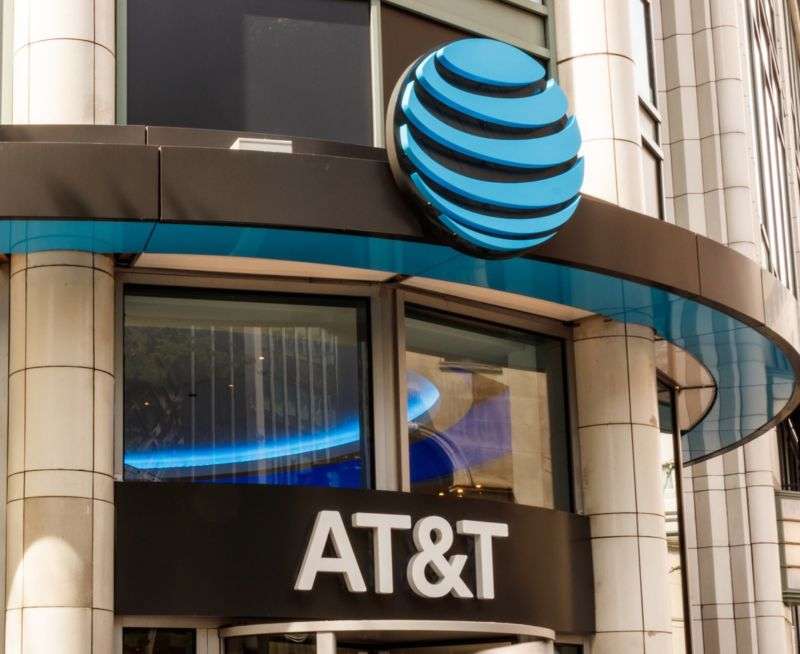
AT&T loses another 1.2 million TV subscribers as DirecTV keeps tanking

AT&T lost another 1.16 million subscribers from DirecTV and its other TV services in the final three months of 2019.
AT&T today reported a 945,000-customer net loss in its “premium TV” category, which includes DirecTV satellite, U-verse wireline TV services, and the “AT&T TV” online service that launched in Q3 and is only available in about 15 cities.
AT&T also reported a net loss of 219,000 customers from AT&T TV Now, a separate streaming service formerly known as DirecTV Now.
For the entire 12 months of 2019, AT&T lost more than 4 million customers from its satellite, wireline, and linear streaming-TV services combined. The company began 2019 with 24.49 million TV customers and finished the year with 20.4 million.
AT&T ended 2019 with 19.47 million customers in the premium TV category, down from 20.42 million customers in that category just three months earlier. For the full year, AT&T lost 3.43 million premium TV customers, a staggering amount compared to other providers even in the declining pay-TV business.
The AT&T TV Now streaming service dropped from 1.15 million to 926,000 subscribers in the three-month period. The AT&T streaming service began 2019 with 1.59 million customers but lost 665,000 customers during the year.
AT&T TV Now had 1.86 million subscribers as recently as September 30, 2018. It took just 15 months for AT&T to lose more than half of them, as customers fled in the face of price increases and expiration of promotional prices. AT&T said it had 8,000 AT&T TV Now customers on “free or substantially free trial-period” plans at the end of Q4, down from 65,000 a year earlier.
Revenue for the AT&T Entertainment Group, which includes video and broadband services, fell 6.1 percent year-over-year to $11.23 billion in Q4 2019. AT&T lost 182,000 home Internet subscribers in the quarter, reducing its total to 14.12 million. The losses all came in AT&T’s older copper-based Internet services, as it added 191,100 fiber customers to hit a total of 3.89 million in that sub-category.
Price hikes and “focus on profitability”
On the plus side for AT&T, its revenue per TV customer rose. Average monthly revenue per premium-TV customer was $131 at the end of 2019, up from $121.76 a year earlier. Price increases at the start of 2019 contributed to this, and AT&T raised prices again this month.
AT&T said its premium-TV customer losses were caused by a “focus on profitability” and “promotional price roll-offs.” The streaming-TV loss was attributed to “fewer promotions.”
AT&T bought DirecTV for $49 billion in July 2015 and had 25.4 million DirecTV and U-verse TV customers combined at the end of 2015.
AT&T has resisted calls from investors to consider selling DirecTV. The company said recently it is “optimistic” that its TV losses peaked in the third quarter, when it shed more than 1.3 million customers.
AT&T’s future video plans include a heavy dose of HBO Max, which is scheduled to launch in May 2020 for $14.99 per month. Average revenue per customer for the Netflix-style service would obviously be much lower than average revenue in satellite and other linear TV services like AT&T TV Now, but AT&T says it’s aiming for 50 million US subscribers within five years. The existing HBO Now service—acquired as part of AT&T’s purchase of Time Warner in 2018— is not included in the TV-subscriber figures described earlier in this article.
AT&T cut employees as revenue fell
Company-wide, AT&T reported Q4 2019 revenue of $46.8 billion, down from $48 billion year-over-year.
“Growth in domestic wireless services and strategic and managed business services revenues partially offset declines in revenues from domestic video, legacy wireline services and WarnerMedia,” AT&T said. Q4 operating income fell from $6.2 billion to $5.3 billion year over year. Q4 net income fell from $4.9 billion to $2.4 billion year over year.
AT&T also continued a trend of reducing its workforce—despite claiming that it would use a corporate tax cut to create jobs. AT&T had 247,800 employees at the end of 2019, down from 268,220 one year earlier.




